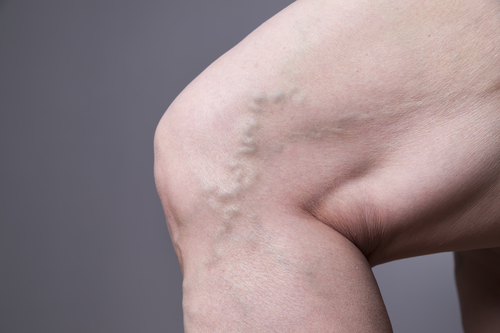
It’s estimated that about one-third of the population suffers from varicose veins. Both men and women can be affected, although women do tend to be more susceptible. Varicose veins form when the veins in the legs can’t push the blood up to the heart. The blood vessels expand to try and help the blood move, and as a result of this increased pressure, your veins bulge and thicken. This leads to the characteristic twisted appearance of varicose veins. These veins are incredibly common: About 34 million men and women, are affected.
To help you set the record straight, we’ve separated the myths from the truth and how varicose veins can be much more than a cosmetic issue.
Myth: If Your Veins Aren’t Visible, There Are No Issues
Facts: Only about half of the people who have this disease actually see the varicose veins. Many times, the fatty tissue in the leg prevents the veins from being visible, and visible veins sometimes act as shock absorbers to help facilitate blood flow even with the condition. Remember, the first signs for varicose veins tend to be heaviness and aching in the affected area.
Myth: Running and Exercise Causes Varicose Veins
Facts: Being an avid runner does not cause varicose veins. In fact, exercise is usually good for the circulation and may even lessen the extent to which varicose veins form. For patients who haven’t had their varicose veins treated and are runners, compression stockings can help prevent blood from pooling in your lower legs during exercise.
Possible Fact: Being On Your Feet All Day Causes Varicose Veins
Having a job that requires you to be on your feet often in the standing position could be a part of the reason why you have developed varicose veins. However, it is still unproven that prolonged standing is one of the significant causes behind varicose veins. It’s common to begin to experience symptoms when standing, so those that stand for long periods may notice varicose veins as a result.
Myth: Varicose Veins Are an Inevitable Sign of Aging
Facts: While aging worsens varicose veins, not everyone will get them as they get older. Visible veins can worsen and become more prominent as we age due to the degenerative process, but young people can get them too. This type of vein is primarily genetic, so your family genes come into play. Changes in hormone levels also increase your risk, especially by way of pregnancy.
Myth: Varicose Veins Only Happen To Women
These veins are more commonly seen in women, but men get them too. About 25% of adult women have some visible varicose veins, compared to 10-15% of men.
Myth: Varicose Veins Will Just Come Back. There’s No Point in Treating Them.
Facts: Today’s technology treats the cause of varicose veins in addition to minimizing the appearance. Treatment to prevent varicose veins from returning is much more successful today than in the past.
Myth: Surgery is The Only Treatment Option.
Facts: Hinsdale Vein and Laser offers many options for both varicose veins and spider veins, depending on your health and needs. Many times, surgery may not be needed, as advances in technology can let us detect and treat the source of the problem that’s causing the veins. Ask us what options would suit you best.
Finding The Treatment Option That’s Best For You
There are many treatment options available when it comes to getting rid of your varicose veins. At Hinsdale Vein and Laser we offer treatments including:
- Endovenous laser ablation
- Chemical ablation using state of the art foam sclerotherapy (Varithena)
- Ambulatory microphlebectomy
- Mechanico-chemical ablation of the vein (MOCA)
- Medical adhesive that results in closure of the unwanted veins (Venaseal)
Make an appointment with Dr. Amjad Alkadri to treat your varicose veins – and feel healthier and ready to face whatever life throws your way.